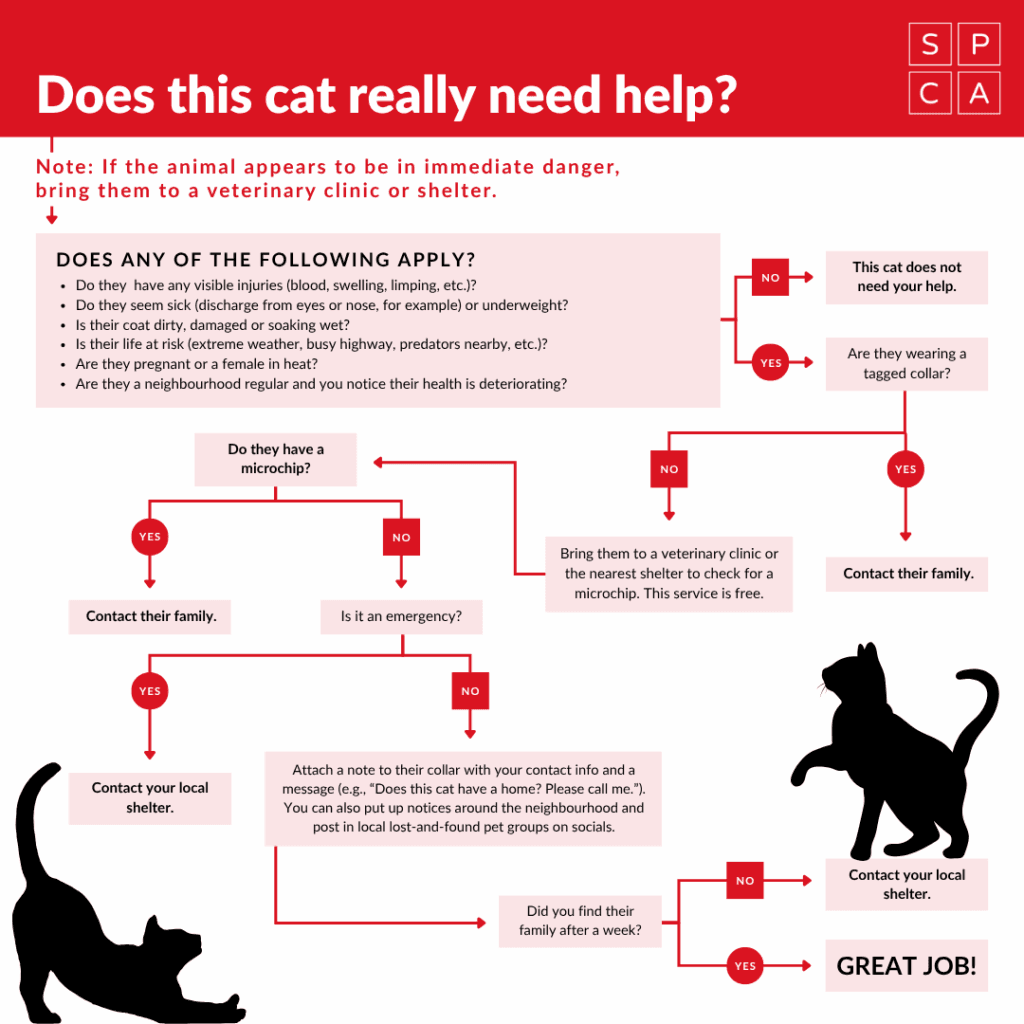Does a cat need help or not?
Doing something or nothing at all is a common dilemma for animal lovers. You spot a cat in your yard or alleyway who seems lost and you wonder whether you should help them or let the cat go about their feline business.
Are they a community cat being fed by the neighbourhood? A cat who has wandered off and is in need of help? Or just the neighbour’s cat out on their daily romp?
These questions feel even more urgent in extreme weather conditions. Here are some tips—and a simple tool—to help you appropriately adapt your actions.
A cat is about nine times more likely to find their way back home if left where they are.*
*According to a study published in the Journal of the American Veterinary Medical Association.
Did you know?
If the cat you’re worried about has a tipped ear, it means they’re a community cat who has been spayed/neutered through a trap-neuter-return (TNR) program. If they’re not injured, sick or visibly underweight, they don’t need rescuing. If you want to help, consider setting up a small outdoor shelter for the winter. If their health worries you, contact your local shelter.

Don’t accidentally “steal” someone’s cat. Focus instead on animals who truly need help.
If the cat you found seems social and relaxed, chances are they have a family who lets them roam. Generally, cats who aren’t used to being outside are usually very anxious: they hide under porches or in sheds and rarely wander around with ease.
We recommend not feeding or taking a cat inside unless they require immediate assistance. A neighbour’s food-loving cat might just take advantage of your kindness—leaving their humans worried when they don’t come home.
Community cats should not be disturbed or relocated unless they require medical care. They are usually easy to identify by their ear tip (a small notch in their left ear), indicating they’ve been sterilized as part of a community cat program. Since neighbours often provide them with food, water and shelter, if you take these cats away, other and possibly unsterilized cats could move in to take advantage of these resources.

Does your cat go out? Make sure their tag says so!
It can prevent unnecessary calls to shelters and spare your neighbours the worry.








